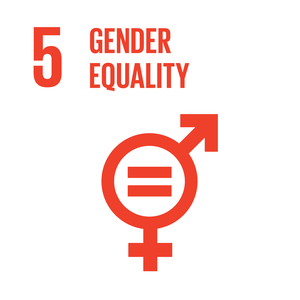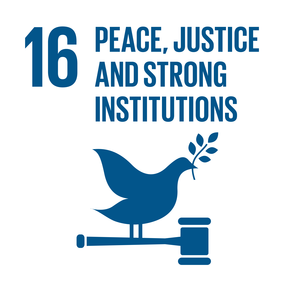Sexual & Reproductive Health Rights
Global Commitments to Strengthen Sexual & Reproductive Health Rights
The international community has made several landmark global commitments related to SRMHR. These are important reference points not only for policy analysis and advocacy, but also for program design. Generally, however, discussions on SRHR continue to focus on women and girls, with little attention to trans, queer, men and boys’ health needs.
Sustainable Development Goals
In 2015, the international community adopted a set of Sustainable Development Goals (to succeed the Millennium Development Goals) that articulated ambitious goals to be achieved by 2030. SDG5 aims to achieve gender equality and empower all women and girls; five targets under SDG5 relate to SRHR and can serve as important benchmarks for accountability. SDG3 aims to ensure health and wellbeing, at every stage of life; three targets under SDG3 relate to SRHR. Each country is encouraged to produce a voluntary national review (VNR) annually to share progress against the SDGs at the national and sub-national level. [See VNR Documentation and Reporting by Country]
- SDG Target 5.1 End all forms of discrimination against all women and girls everywhere
- SDG Target 5.2 Eliminate all forms of violence against all women and girls in the public and private spheres, including trafficking and sexual and other types of exploitation
- SDG Target 5.3 Eliminate all harmful practices, such as child, early and forced marriage and female genital mutilation
- SDG Target 5.5 Ensure women’s full and effective participation and equal opportunities for leadership at all levels of decision-making in political, economic and public life
- SDG Target 5.6 Ensure universal access to sexual and reproductive health and reproductive rights as agreed in accordance with the Programme of Action of the International Conference on Population and Development and the Beijing Platform for Action and the outcome documents of their review conferences
- SDG Target 5.c Adopt and strengthen sound policies and enforceable legislation for the promotion of gender equality and the empowerment of all women and girls at all levels
- SDG Target 3.1 By 2030, reduce the global maternal mortality ratio to less than 70 per 100,000 live births
- SDG Target 3.2 By 2030, end preventable deaths of newborns and children under 5 years of age, with all countries aiming to reduce neonatal mortality to at least as low as 12 per 1,000 live births and under-5 mortality to at least as low as 25 per 1,000 live births
- SDG Target 3.7 By 2030, ensure universal access to sexual and reproductive health-care services, including for family planning, information and education, and the integration of reproductive health into national strategies and programs
- SDG Target 16.1 Significantly reduce all forms of violence and related death rates everywhere
- SDG Target 16.5 Substantially reduce corruption and bribery in all their forms
- SDG Target 16.6 Develop effective, accountable and transparent institutions at all levels
- SDG Target 16.7 Ensure responsive, inclusive, participatory and representative decision-making at all levels
- SDG Target 16.10 Ensure public access to information and protect fundamental freedoms, in accordance with national legislation and international agreements
- SDG Target 16.B Promote and enforce non-discriminatory laws and policies for sustainable development
Programme of Action of the International Conference on Population and Development (ICPD)
The 1994 Programme of Action of the International Conference on Population and Development (ICPD) was one of the first international agreements to address issues related to sexuality, sexual and reproductive health, and reproductive rights. Paragraph 7.3 clarifies that these are not a new set of rights, but reflect existing human rights instruments related to sexual and reproductive autonomy (freedoms) and the attainment of sexual and reproductive health (entitlements). The 1995 Beijing Platform for Action expands this definition by affirming in paragraph 96 the right to exercise control over and make decisions about one’s sexuality, free of coercion, discrimination and violence. Fulfillment of each state’s obligations under these global commitments is assessed every four years in a Universal Periodic Review (UPR), which is essentially a peer review of each state’s human rights record.
The UN Secretary General’s Global Strategy for Women’s, Children’s and Adolescent’s Health is a global multi-stakeholder process and roadmap that brings together UN, governments, donors and other stakeholders to accelerate momentum for women’s, children’s and adolescents’ health from 2016 to 2030.
Global Strategy for Women’s, Children’s and Adolescents’ Health
Global Strategy for Women’s, Children’s and Adolescents’ Health was originally launched in 2010 as the Global Strategy for Women’s and Children’s Health. This strategy brought together 127 global stakeholders, including governments, NGOs and private sector to push forward momentum needed during the end of the MDGs to end preventable maternal and child deaths and also sought to close the estimated funding gap of US $88 billion for maternal, newborn and child health. An updated Global Strategy, which was launched in 2016 to align with the 15 –year span of the SDGs now also puts adolescents at the center of a movement to accelerate progress to a multi-sectoral and integrated approach to health and sustainable development.
London Summit on Family Planning
In 2012, the London Summit on Family Planning brought together over 20 governments and NGOs, private and bilateral donors to committing to address the financial, service and policy gaps relating to women’s access to contraceptive services and information. Out of the London Summit, Family Planning 2020 (FP2020) was created to work with the global community to ensure that 120 million women and girls fulfill their right to access and use contraception. FP2020 is a global partnership working in 69 countries around the world, with 38 countries having made financial, policy or service commitments.


